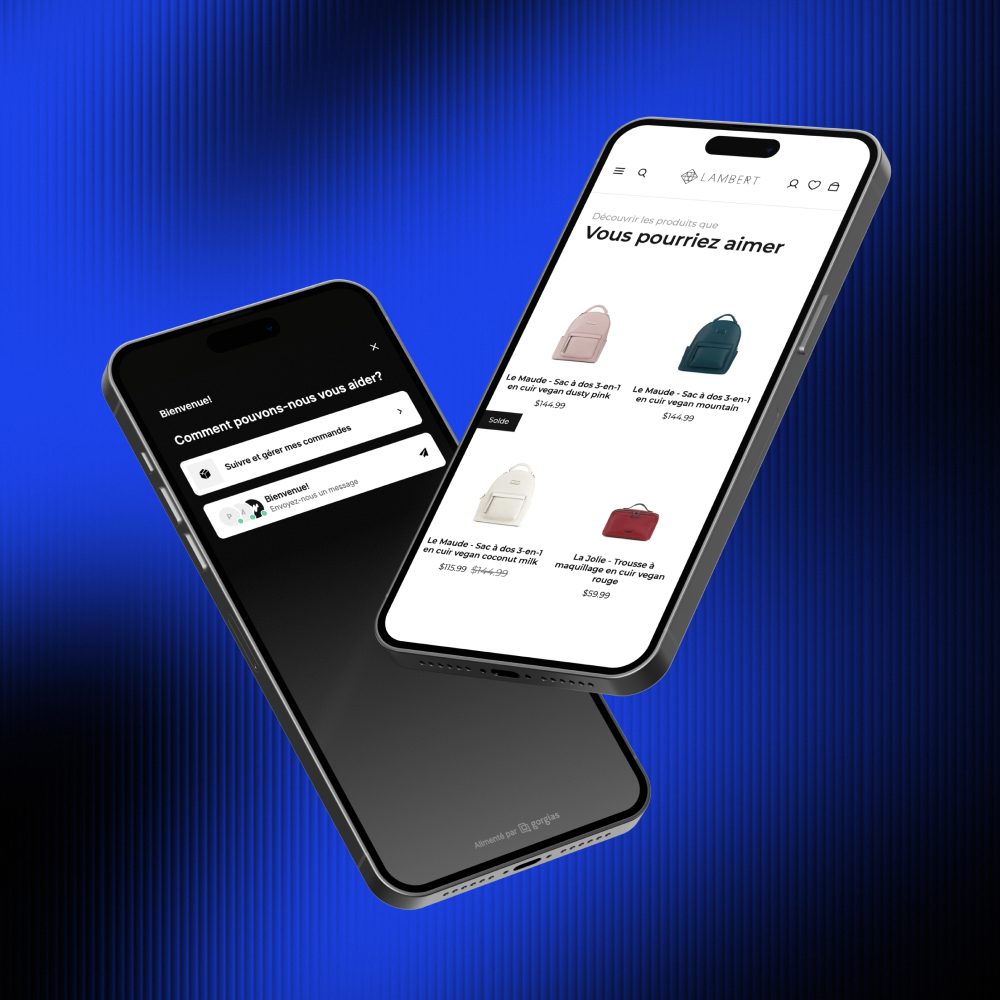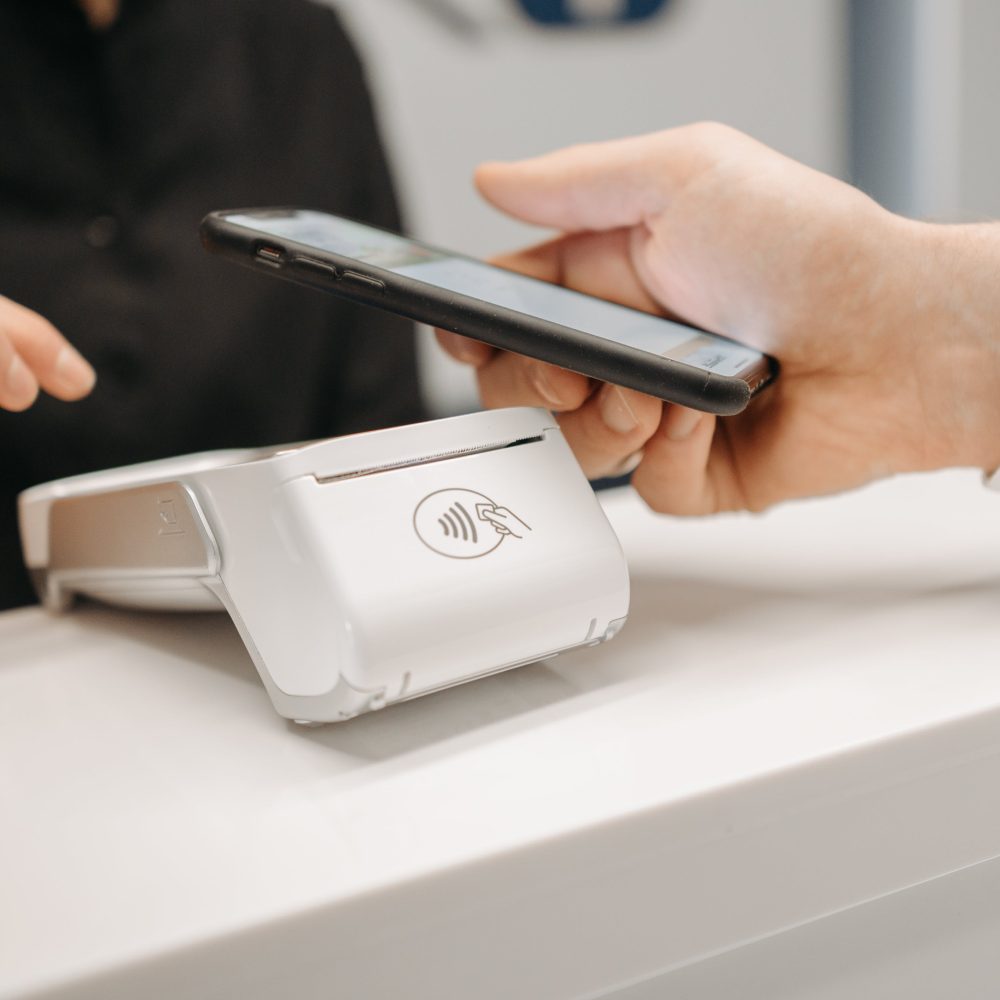Retail, both online and in-store, is undergoing a real transformation and benefiting from exciting technological advances. As a firm specializing in eCommerce, Novatize is at the forefront of these changes, bringing you the trends to watch and anticipating the future of retail. Here are 9 innovations that will help you evolve your business to meet your customers’ new expectations.
To find out more about the trends affecting all aspects of eCommerce, take a look at the 15 eCommerce trends to watch for 2024.
1. Reinventing mid-range retailing
In a context where luxury and discount are the focus of attention, the mid-range must reinvent itself to respond to common challenges, but also to regional specificities, particularly in North America. On a global scale, consumer habits are polarized between a preference for affordable products and an attraction to luxury. In North America, for example, giants such as Walmart and Amazon dominate the lower end of the market, combining competitive pricing with convenience, while premium brands such as Nordstrom and Canada Goose appeal to a high-end clientele. Against this backdrop, mid-range retailers such as the Gap and Macy’s are coming under increasing pressure.
The main challenge for the mid-range is its lack of differentiation. Too expensive to compete with discounts, but not distinctive enough to compete with premium brands, it risks falling into a zone of disinterest. Especially in North America, consumers are particularly sensitive to the shopping experience and personalization. Brands such as Lululemon or Warby Parker, although operating in the mid-price range, succeed by offering differentiated products and cultivating an emotional bond with their customers. These successes show that the mid-range can survive, provided it offers genuine added value. From an international perspective, sustainability appears to be a key opportunity for the mid-range. Consumers, especially the younger generation, are turning to ethical and responsible brands. Initiatives such as Uniqlo’s, which invests in sustainable materials while remaining accessible, illustrate the way forward.
2. The hyper-personalized shopping experience
Artificial Intelligence (AI) and machine learning technologies are transforming retail by delivering hyper-personalized shopping experiences. Using product recommendations based on past shopping behavior to AI-powered chatbots, retailers are redefining the way they interact with customers online. The advantage is to present the most interesting content to the target, via the most appropriate channel, and at the most opportune time in order to close the sale. Hyper-personalization applications can often be seen in the context of loyalty and other programs.
According to a study produced by Novatize in collaboration with Leger, 41% of Canadians have already used shopping recommendations and tips based on their purchasing behavior and profile, and 53% say they are inclined to do so in the future, an increase of almost 18% compared to 2023 in both situations. This demonstrates that consumers expect personalized experiences.
3. Immersive and phygital commerce: a reinvented shopping experience
Immersive technologies such as augmented reality (AR) and virtual reality (VR) [French only] are constantly advancing, transforming online shopping into a captivating, interactive experience. eCommerce now goes beyond the simple transaction to offer complete immersion.
The integration of phygital, which combines the physical and digital experience, is transforming the way consumers interact with brands. For example, physical stores can use digital technologies such as QR codes and interactive kiosks, smart mirrors to offer additional information or a digital shopping experience, but in-store.

4. Quick commerce and new delivery services
The focus is on speed of delivery, with retailers looking for ways to ship products faster than ever. Expectations are evolving towards ever shorter lead times, prompting merchants to adjust their delivery strategies, such as same-day delivery or the use of postal crates or even drones.
Some specialized logistics services enable merchants to offer same-day delivery in major urban centers, responding to the need for greater speed. This approach is crucial for retailers seeking to remain competitive, especially in the food and beverage industry, as well as in fast-moving consumer goods.
Postal lockers are growing in popularity, offering consumers a centralized solution for collecting and managing their online purchases. Available in major cities, residential complexes and trading partner networks, these eCommerce lockers play a key role in facilitating order collection. Some are even designed to store large products, such as furniture from companies like IKEA, or to maintain specific conditions, for example, for products that require controlled temperatures, like Cook it meals.
According to a study published by the Conseil québécois du commerce de détail [French only], in particular contexts such as Black Friday or Cyber Monday, up to 94% of consumers will prefer to receive their order at home to avoid picking it up in store.
A notable trend in ultra-fast delivery is the acceleration of same-day delivery. Some market players are referring to the concept of Q-Commerce (Quick Commerce), aiming for deliveries in under an hour. This rapid evolution reflects the need for constant innovation to meet consumers’ growing expectations of fast, efficient delivery.
To see all the articles and top tips from Novatize experts for your eCommerce logistics strategy, visit our blog section.

5. Channel integration and unified commerce
Unified commerce is becoming a reality as retailers integrate their online and offline channels. Customers expect a seamless experience, whether they buy online or in-store. Retailers are adopting strategic approaches to harmonize these two worlds and deliver a consistent customer experience, whatever the touchpoint.
Can your business benefit from a unified commerce strategy?
Download the free white paper
The transition from one channel to the other is facilitated by unified management systems, enabling customers to start their purchasing journey online, continue it in-store and finalize their order via a mobile application, for example. This continuity strengthens customer loyalty and offers them the flexibility they are looking for in their purchasing journey.
Integrated loyalty programs transcend borders, enabling customers to collect and spend points both online and in-store. This encourages ongoing participation and strengthens customer engagement across multiple channels.
According to a study published by the Conseil québécois du commerce de détail [French only], shoppers in Quebec are more inclined to buy online for clothing, pharmaceuticals/beauty products and food. Retailers in these industries will need to be even more responsive to consumer expectations.
Physical stores are becoming extensions of the digital world, integrating technologies such as smart mirrors, interactive screens, smart labels and more. These devices are transforming the in-store shopping experience, enabling customers to access additional product information, view personalization options and even make online purchases directly from the store.
To understand the differences between omnichannel and unified commerce, read this article.

6. The Internet of Things (IoT): more connected and personalized shopping
The Internet of Things (IoT) is transforming the shopping experience, making it more personalized and interactive. Connected objects, such as smart fridges, smart clothes or even fashion accessories, collect data on shopping habits and enable brands to better understand their customers’ needs. Companies will be able to use this data to offer hyper-personalization in real time. For example, a connected watch could recommend products based on previous purchasing preferences, or a smart fridge could suggest recipes or products to buy.
Also, IoT (Internet of Things) sensors are widely used to monitor stock levels in real time and prevent stock-outs. This automation enables retailers to maintain optimal stock levels, reducing losses linked to out-of-stock products.
Smart mirrors in fitting rooms are an emerging application of in-store interactive technologies. These mirrors enable customers to try on garments virtually, adjust colors and view additional styling options, enhancing the in-store shopping experience.
A concrete example of a smart store is the cashierless store concept, where item recognition and automatic payment technology simplify the shopping experience for customers. Amazon Go is a pioneer in this field, offering a frictionless shopping experience.
7. The era of loyalty programs 3.0 and advanced personalization
Loyalty programs are evolving to meet the changing expectations of consumers. Thanks to the analysis of customer data, companies can offer more personalized experiences, such as tailor-made discounts or exclusive products reserved for VIP members. In addition, we’re seeing the rise of business-to-business programs, which strengthen customer engagement while fostering long-term loyalty within a business ecosystem. These initiatives help create lasting bonds and maximize value for the entire trade group.
In the latest survey conducted by Novatize and Leger, free delivery is by far the most attractive incentive to encourage consumers to join a loyalty program. Indeed, 70% of respondents consider it in their Top 3, and 35% mention it as their first choice of incentive.
8. A wide range of payment methods
Beyond the traditional payment methods of credit card and bank transfer, options such as digital wallets, cryptocurrencies and fractional payments (BNPL) are gaining in popularity. These solutions enable consumers to choose the payment method that suits them best, according to their preferences and financial situation.
A study conducted by Novatize and Leger in Canada shows that the credit card remains the most popular payment method, with 80% of respondents using this method. Online wallets such as PayPal are also popular, accounting for 23% of consumers’ choices, while solutions such as Amazon Pay, Shop Pay or Apple Pay appeal to 18% of respondents.
9. Live shopping and social shopping: reinventing real-time purchasing
In 2025, live shopping and social shopping are redefining the shopping experience, propelled by advances in live streaming. Consumers prefer real-time interactions, where they can ask questions, watch live demonstrations and feel fully connected to the brand. These dynamic formats offer companies a unique opportunity to strengthen their customer relationships, combining authenticity, exclusivity and playful elements to captivate their audience and stimulate engagement. Social platforms such as Instagram, TikTok and Facebook are transforming into veritable shopping spaces, where purchases are made directly from publications or streaming videos.
Live shopping is gradually taking hold on a global scale. For example, Sephora organizes live events on Instagram and TikTok, combining product demonstrations and real-time interactions to captivate their audience. In North America, companies like Walmart are also embracing this trend, collaborating with TikTok for interactive sessions targeting the younger generation.
Retail is evolving rapidly thanks to the latest technological advances, and the next few years will be full of challenges. From personalized shopping experiences to channel integration and ultra-fast delivery, retailers will need to remain agile and embrace innovation to stay competitive and meet customer expectations.
Ready to transform your business? Contact Novatize’s unified commerce experts today.
Novatize
📍330-330 Saint-Vallier Street East, G1K 9C5, Quebec City, QC, Canada
Inspired by what you’ve read?
Our team of experts can help you take your eCommerce to the next level!

